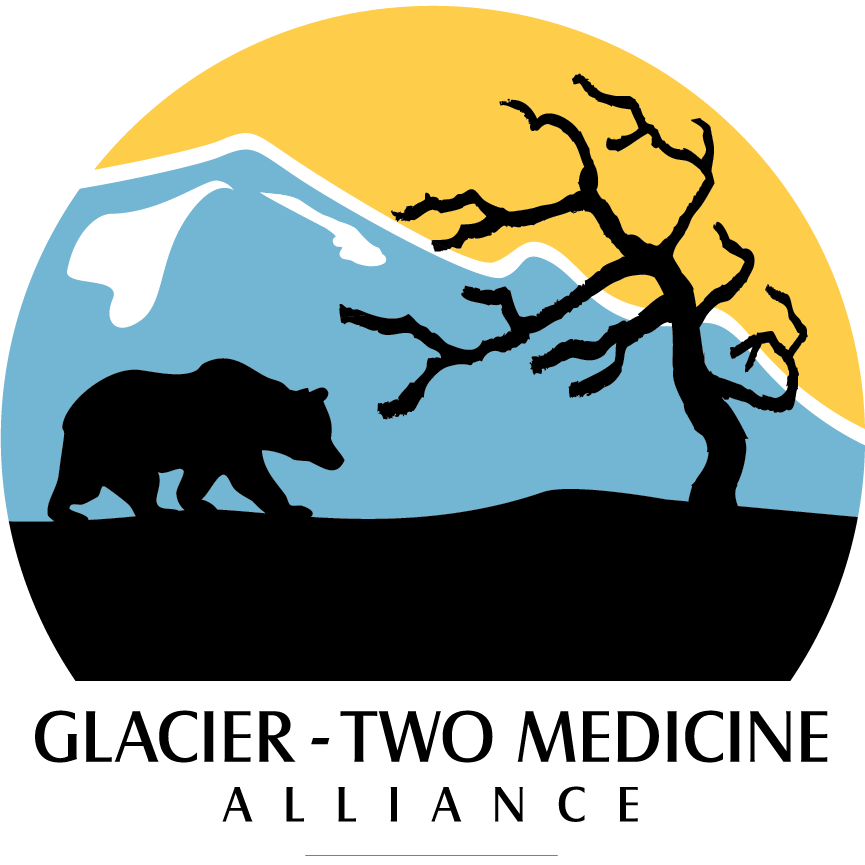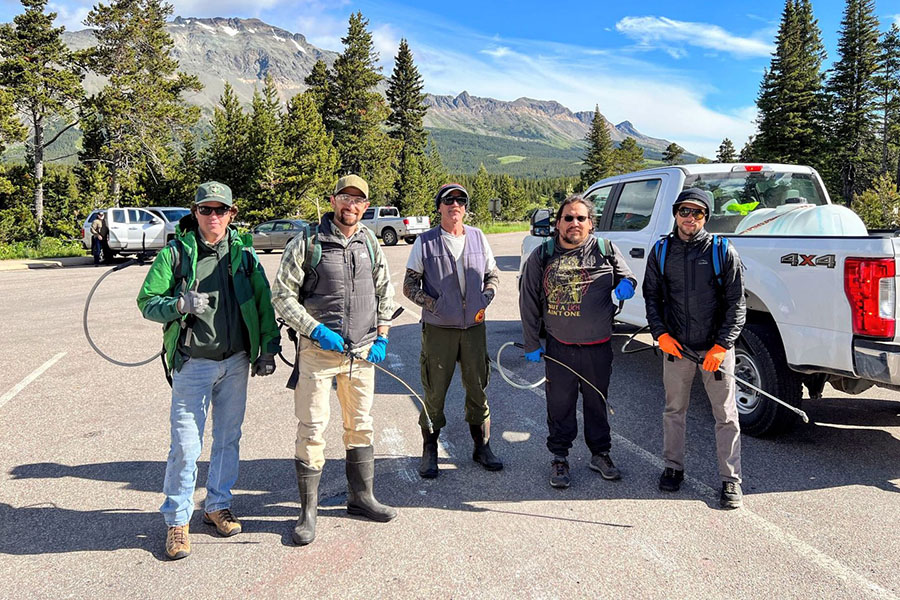
The Badger-Two Medicine and surrounding lands of Glacier National Park and the Blackfeet Reservation are home to a dazzling diversity of native plants, nearly 1100 different species according to one account. This rich array of native flora are foundational to the ecological health and integrity of this region.
Unfortunately, many of our native plants are under siege from invasive species and other noxious weeds. Left unchecked, these non-native plants cause far-reaching consequences to the environment, including the degradation of fish and wildlife habitat and water quality. Many native plants are invaluable sources of food and medicine for people, or essential to Blackfeet cultural practices.
Protecting native biodiversity is a top priority of Glacier-Two Medicine Alliance. However, we recognize it is not enough to simply advocate for greater protection and expect public agencies to take care of the land alone. We share a responsibility to help care for the lands we share and cherish. That’s why Glacier-Two Medicine Alliance has joined the fight against invasive species and noxious weeds. Our current priorities are to draw greater attention to the threat weeds pose, to supplement agency actions to mitigate and monitor weeds, and to improve coordinated weed mitigation efforts across federal, tribal and private lands in this region. While we don’t expect to eliminate weeds, our goal is to improve the ability of native species to compete against well-established intruders, and identify new infestations early so they can be contained.
2023 Field Season So Far
The weeds are growing and we’ve been busy fighting them!
Raising awareness, spurring action
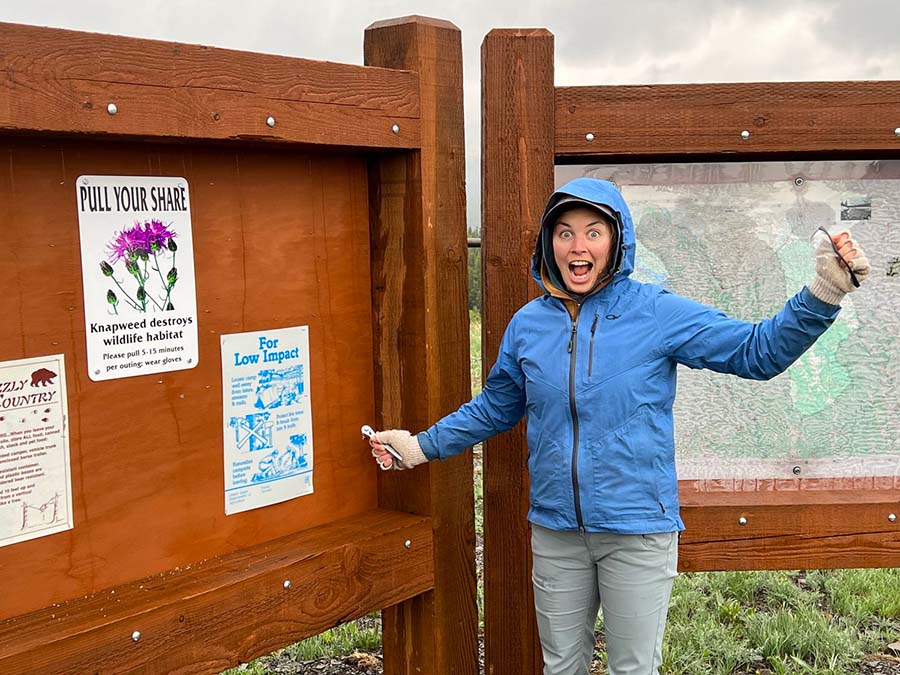
Joining forces at the Marias Pass Spray Day
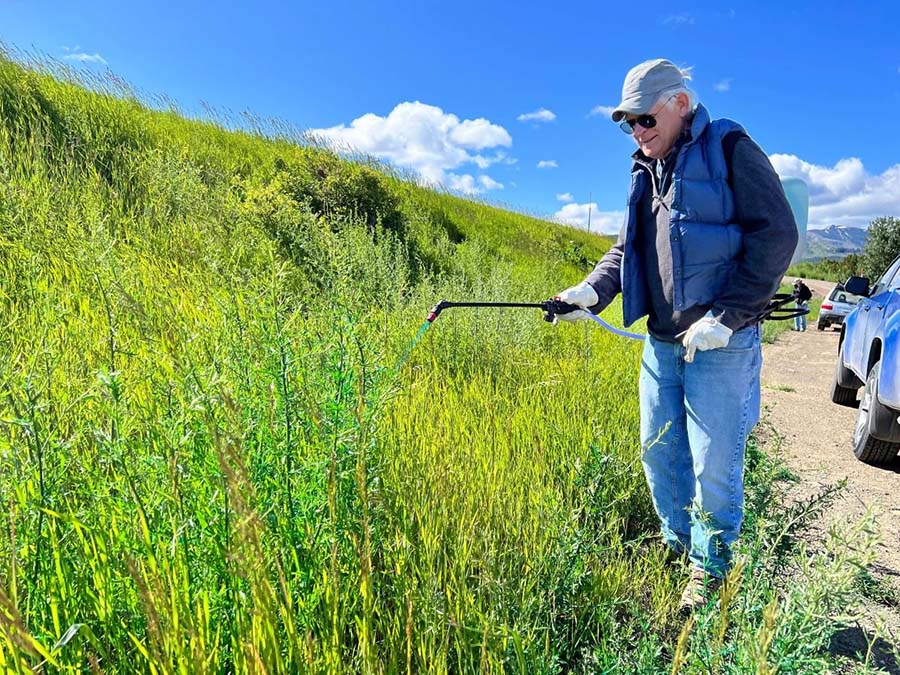
Piikani Lands Crew hard at work in the Lubec Hills

Still more to do - and you can help!
On July 29th we’re hosting the second annual Badger-Two Medicine Community Weed Pull and Education day. Please join us for this fun, rewarding day of caretaking public lands and learning about weeds ecological, cultural and economic impacts, as well as ways to manage them. Lunch provided and some lucky folks will take home a fabulous door prize.
In August we’ll be releasing more root boring weevils. These insects have been used safely and effectively for nearly forty years in Montana to stymie the growth and spread of knapweed so that native vegetation can better compete. Volunteers are needed to help distribute the bugs!
And, we’ll continue to train and equip volunteers to monitor and report weed locations in the Badger-Two Medicine. Knowing where the weeds are is vital to checking their spread as well as to identifying new infestations so they can be eliminated early. If you recreate in the Badger and are want to help us track weeds, please contact Jordyn Steele at jordyn@glaciertwomedicine.org or by phone at 406-434-6223. Monitoring is easy to do – all it takes is an iphone and some basic weed ID knowledge (we’ll give you a guide!).
How you can be a hero for native species!
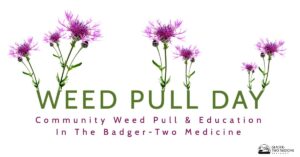
- Join us for the Badger-Two Medicine Community Weed Pull and Education day, July 29th.
- Pull knapweed regularly, even just 10 – 15 plants per outing makes a difference! Wear gloves! Bag and remove if flowered.
- Report where you see weeds in the Badger-Two Medicine. Contact Jordyn Steele at jordyn@glaciertwomedicine.org or by phone at 406-434-6223 to learn how.
Thank you partners!
- US Forest Service’s Rocky Mountain Ranger District
- Bob Marshall Wilderness Foundation
- The Wilderness Society
- Rocky Mountain Weed Round Table
- Individual Donors and Volunteers
- Wild Montana
- Montana Noxious Weed Campaign
- MSU Extension
- Montana Biological Weed Control Coordination Project
